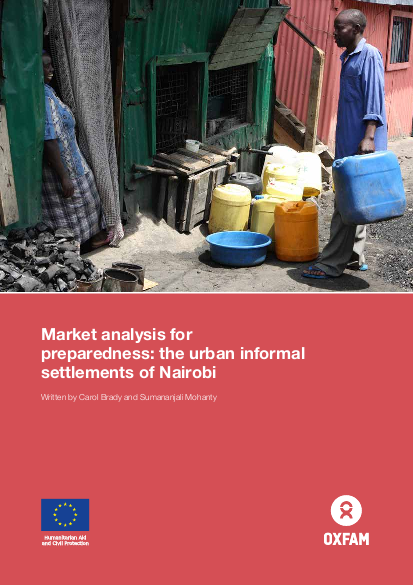
The last few years has seen a significant change in the way that humanitarian organisations approach response design. Partly spurred on by the growth in cash transfer programming, market based programming, “the practice of working through and supporting local markets, is now widely considered best practice in the humanitarian field. Where market based programmes are possible, such interventions favour economic recovery and livelihood development”. To date, emergency market analysis has predominantly been undertaken following a crisis, to ensure that humanitarian interventions, at the very least, do no harm to market systems and can identify opportunities where relief can be delivered through these existing market systems. Emergency market analysis is now common. One such approach, the Emergency Market Mapping and Analysis toolkit – EMMA, has now been undertaken in more than 20 countries.
This paper describes the market mapping and analysis toolkit implementation in informal settlements of Nairobi, Kenya.
Resource collections
- Coordination
- Evaluating humanitarian action
- Monitoring and Evaluation (M&E)
- Monitoring of humanitarian action
- UN Habitat - Urban Response Collection
- Urban Response - Urban Crisis Preparedness and Risk Reduction
- Urban Response Collection - Community Engagement and Social Cohesion
- Urban Response Collection - Economic Recovery
- Urban Response Collection - Environment and Climate Change
- Urban Response Collection - Housing, Land and Property
- Urban Response Collection - Urban Crisis Response, Recovery and Reconstruction
- Urban Response Collection - Urban Resilience
- Use of evaluation evidence